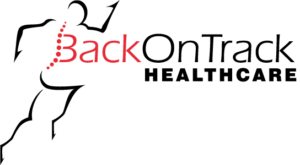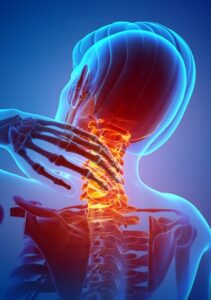Dry Needling is a treatment with very successful results. It which uses very thin (acupuncture) needles without any medication (a dry needle) to achieve its aim.
Dry needling is used to treat pain and dysfunction caused by muscle problems, headaches, and some nerve problems. It is not at all the same as acupuncture. Acupuncture is part of Traditional Chinese Medicine, whereas dry needling is a western medicine technique and unlike medical needles which may have a medication within it, our needles are “dry” and are used to penetrate the skin into certain musculature with the aim to release the deep lying tissues that are more difficult for a manual therapist to treat.
How does it work?
Dry Needling works by changing the way your body senses pain and by helping the body heal stubborn muscle spasm associated with trigger points. There are additional electrical and chemical changes in the body associated with dry needling therapy which assist in the healing process. It is important to see the needles as just one part of your overall rehabilitative treatment. Dry needling is not a miracle cure it is a normal part of your treatment. It is vital that you do the exercises and follow the advice your therapist gives you in conjunction with the needling for optimal recovery.
A length and thickness of needle appropriate for your condition and your body size will be used and then inserted through the skin at the appropriate place. During the needling treatment, it is important not to move until told to. You will feel a small pinprick. Depending on the type of needle technique chosen by your therapist, you may also feel a muscle ache and a muscle twitch. These are all normal and aimed for sensations, and mean that you will experience good relief from your symptoms. It is normal to feel sore for 24-48 hours after, while the body heals itself. It is important not to exert yourself in this period, gentle stretching is allowed.
Are there any risks?
In general, there is very little risk associated with this technique if performed properly by a trained practitioner. You may have a little bruising around the needle site, much the same as you would with any injection. On rare occasions, people may feel very happy, tearful, sweaty or cold. These symptoms all fade quickly. Fainting may occur in a very small minority of people. There are no lasting ill effects of these side effects.
The risk of infection is negligible. All needles used are single use only and individually packed in sterilised sealed packaging. Once used each needle is disposed of in a sharps box which is turn disposed of by a specialist removal company. All appropriate skin surfaces will be treated with antibacterial spray, gel or wipes for added protection.
What’s The Difference Between Dry Needling and Acupuncture?
Whilst dry needling and acupuncture both involve a needle that penetrates the skin, their intent is very different. Acupuncture originates from China and aims to manipulate the flow of Qi (energy) within the body to heal a variety of conditions and medical complaints. Dry needling however follows evidence based guidelines, and works on the musculoskeletal system to target certain locations within the body to improve range of movement and stimulate blood flow.
At Back on Track Healthcare, our intent is to use dry needling to work on the neuromuscular system helping to reduce pain and muscular tension so that our patients can get back to doing the activities they love doing.
What Does a Dry Needling Session Involve?
As Back on track Healthcare is primarily an osteopathic clinic, on your first visit, we will take a full case history. This involves asking you questions about your symptoms, but also some more general information so we can find out not just what is happening, but why. Following this we will do an examination to determine what structures are being compromised, and once we have ascertained the cause we will begin treatment. You may be given the option of regular osteopathy, or if suitable for your condition, may be considered for using dry needling as an adjunct to manual therapy.
Due to the need for the needles to penetrate the skin, patients are required to wear appropriate clothing. This might just mean removing your t-shirt, or dressing down to your bra if you’re a woman.
If however we need to work on the lower back or gluteal muscles in the buttock region, then patients should be prepared to dress down to their underwear, where we will then cover you up with towels and then lower certain parts of the underwear so that the skin is accessible. Our practitioners have been professionally trained in towel technique so that a patient’s modesty is kept at all times and is never made to feel uncomfortable. If at any point you would like to try another technique instead of dry needling, we are more than happy to do this for you.
What Does Dry Needling Treat?
Dry needling can be used to treat a wide number of ailments, however some of the most common complaints we use dry needling to treat are; wry neck, neck and shoulder pain, lower back pain, sciatica, shin splints, plantar fasciitis and general muscle tightness.
Does Dry Needling Hurt?
Each and every one of us is very different, and this means our tolerance of discomfort is different too. The majority of patients do not find dry needling painful, but it can also depend on the amount of muscular tension you are holding.
If you look closely at the picture you can see a little plastic cover that surrounds the needle. Whilst this might just look like a protective cover for the needle, it is far cleverer than that. When the plastic area surrounding the needle is placed firmly on the skin, it draws the brains attention to this sense of touch, but not the area next to it. By quickly and firmly pressing the needle down within this circle, the brain is unable to detect the needle and is able to penetrate the skin without the patient experiencing any of the pain that would usually be expected.





